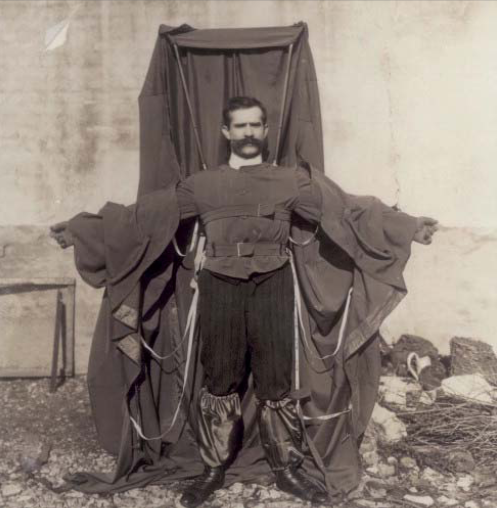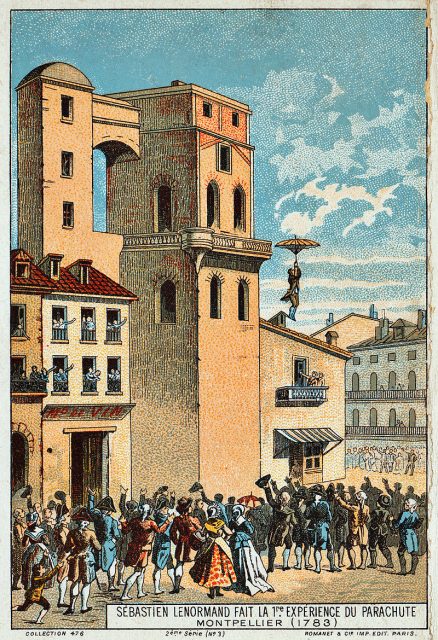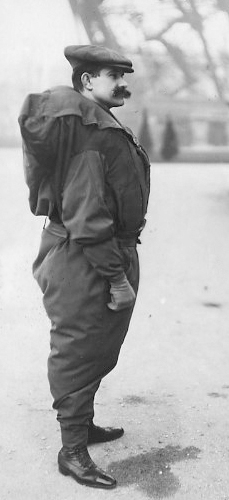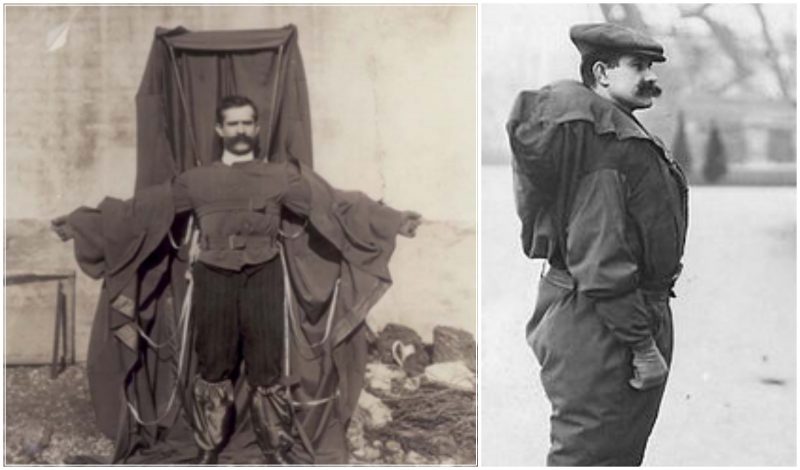Humans do love to fly. That’s why we invented the hot air balloon, the airplane, the parachute, so on. Gravitation is too challenging for people who believe that nothing is impossible. There are such “human examples” who live for their beliefs and go beyond the limits of average people.
To be average is not an offense but more of a safe style of living and there’s nothing wrong with that because there are many people out there “crazy” enough to take risks. Such was Franz Reichelt, a tailor passionate about flying who invented a parachute and jumped off the Eiffel Tower. The parachute proved inadequate for the move, the flight was a straight fall from the first platform of the Eiffel Tower–and fatal for Reichelt.
Known as the “Flying Tailor,” Reichelt had a pretty successful tailoring business located in his apartment close to the Avenue de l’Opera. He was an Austrian born in 1879, and after 10 years of living in Paris, Reichelt obtained French citizenship in 1909. His clientele was mostly Austrians who could afford short trips to Paris and clothes from the tailor’s shop.

In 1910, the tailor became fascinated with the practicality of the “Aeroplane,” to the degree of becoming personally obsessed with flying. He started dreaming about a parachute that would enable individuals to fly safely. Soon he began drawing sketches and tailoring the flying costume. The suit was quite similar to the ones worn by aviators but more massive with a silk canopy, rods, and some rubber added to allow it to fold out. In total, it spread out some 320 to 340 square feet and weighed 20 pounds.
Reichelt’s excitement rose when, in 1911, the prestigious Aero Club de France announced an award of 10,000 francs to whomever could demonstrate a successful parachute design. He tried throwing dummies out of the window of his apartment on the 5th floor but with little to no success. However, he still went on to present his invention at the Aero Club. He was rejected, and discouraged by its members from pursuing the development of that costume because it wasn’t even close to a parachute for safe flying.

But the opinion of professionals wasn’t enough to dissuade the tailor. He believed that his costume was indeed a parachute and the only thing it lacked was a suitably high platform to demonstrate the flight. He started petitioning the Parisian Prefecture of Police to permit him to test his invention by “flying off” the Eiffel Tower. After a few unsuccessful petitions, he was finally allowed to make the test in February 1912. He had petitioned to throw dummies off the tower with the suit on. However, when he arrived to perform the test on the 4th of February, he himself was wearing the costume and was ready to throw himself off.
Friends and spectators tried to talk him out of his intentions, but Reichelt was stubborn and had already decided to prove his creation perfectly functional. There was an audience around the Eiffel Tower, and two cameras recorded the event. Everyone was there expecting a dummy to be thrown off and everyone got anxious when they saw the tailor getting ready to jump.
One, two, three, and the tailor jumped in his flying suit but instead of flying and safely landing on the ground, he fell straight from the first platform of the tower. His “flight” is filmed–Reichelt getting ready, jumping, and falling on the icy ground. Needless to say, he died immediately. There were journalists, police, and a small crowd that gathered around the tailor’s body. In the video, the police can be seen measuring the depth of the hole made by Reichelt’s fall.

The next day the media covered the event completely. Reichelt was called mad, genius, inventor, amateur, irresponsible, brave, etc. The authorities became suspicious and investigated who had permitted the experiments from the Eiffel Tower.
The greatest irony, however, was that two days before Reichelt had jumped, on the 2nd of February, Frederick R. Law, an American steeplejack, successfully conducted a flight with a parachute jumping from the torch of the Statue of Liberty and landing on the ground alive. News traveled slowly in those days, of course, and this information didn’t reach the tailor in time.
